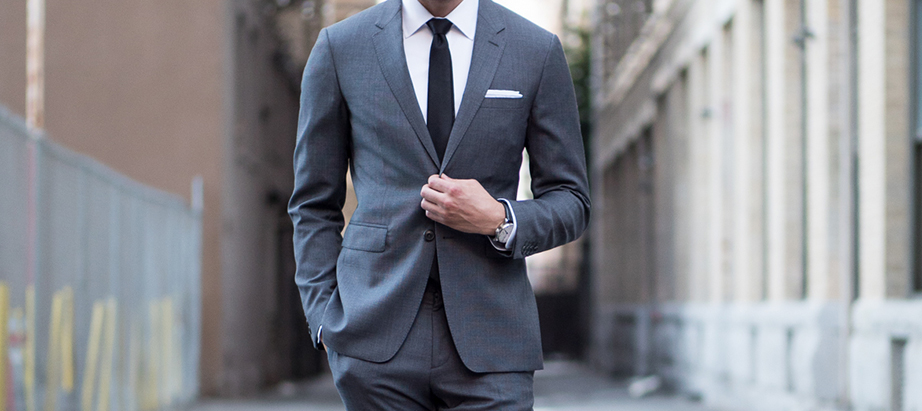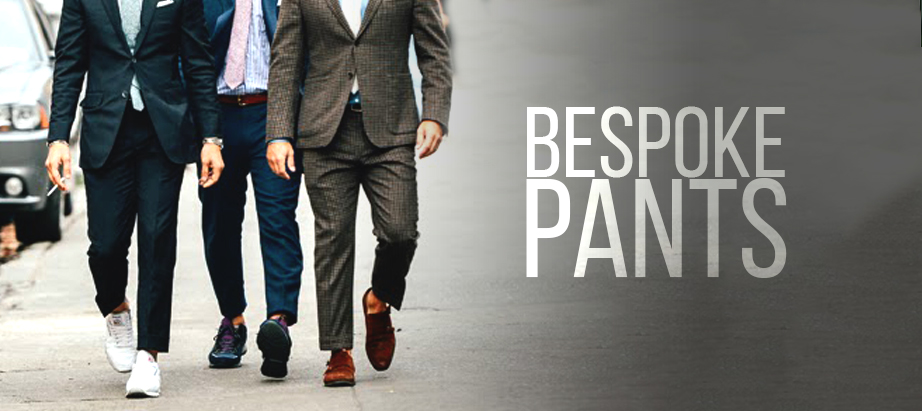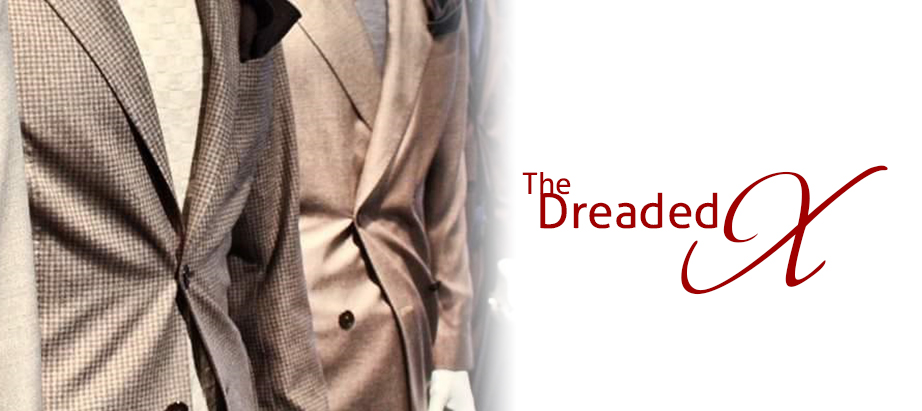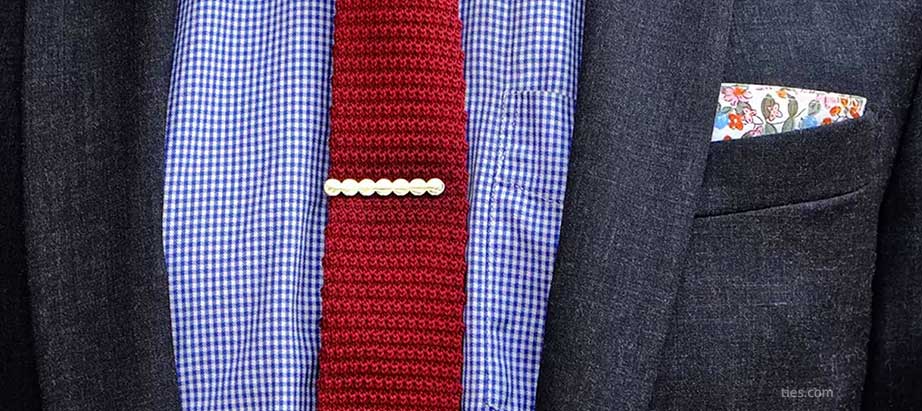Wearing a suit doesn’t automatically make you a suiting expert! There. We said it. Oh, we all had to learn that lesson – often the hard way.
Putting on a suit doesn’t automatically transform you to be a stylish gentleman (you are not Superman that puts on a cape and takes off flying to save people in danger). Repeat after me.
“I. Am. Not. Superman.”
In this article we’ll go through 5 signs that shows that a man’s venture into the world of suits has just begun.
Once you learn NOT to make these mistakes, you may as well call yourself a suiting apprentice. The rest is all about finding your personal style, how to combine colors (what goes with what), and when to wear certain suits and when to leave them in your wardrobe. Let’s dive into it.
1. The right fit:

Many young gents make the mistake to wear an off-the-rack suit and just hope for the right fit. That is however highly unlikely, as you probably don’t have the one-size-fits all body type. It may fit you well around the chest, maybe the back has the right length, but hey, why are the sleeves so long and why can’t I close my jacket?
Don’t go there.
A good tailor is like a good barber: once you find one, he’s for keeps.
A bespoke suit is made to your exact body measurements and doesn’t leave open ends (or jackets). Tailors vary in skill and in how they communicate the work they’re doing, so getting a suit adjusted is only going to deliver a good return if you can make your exact needs clear. When dealing with us at Damanino, we’ll make sure of a seamless communication from start to end.
2. A word about Pants

Many of you may think:
“Oh, okay. I need a tailored jacket, but hey, the pants are a no-brainer and finding some that fit me, doesn’t seem too hard”
The reality is, yes it is!
If you don’t want your pants to look saggy, your thighs to look too crammed (so you can’t move about), or want your legs to be just the right length without being too long (or short) – you need to make sure to get the size right.
Also here, there is no one-size-fits all solution – well, unless you want to wear joggers. Try that at work and you’ll be sent home. Indefinitely.
The back of your trousers should be a smooth drape over the shape of your rear end. A good fit in the seat will lie loosely against your underwear, without pulling tight against your bottom, or draping loosely down your thighs. You can spot a bad fit in the seat when there are horizontal wrinkles just under the buttocks (caused by too tight of a fit), or by loose, U-shaped sags on the backs of the thighs (caused by too loose of a fit).
The pants “break” is that small wrinkle caused when the top of your shoe stops your trouser cuff from falling to its full length. One horizontal dimple, or crease is usually ideal.
The cuff should ideally rest on the top of your shoe, but it shouldn’t do much more than that. The trouser can fall a touch longer in the back than in front, so long as it’s still above the heel of the shoe. There are three main trouser styles: tapered, straight or wide. At the moment, the tapered or “skinny” trouser is in style, however this look does not compliment all body types, sadly.
The straight leg trouser is standard and looks good on any body type. The wide leg trouser only suits those with a heavier/wider lower body and is of average height.
3. The Jacket Closure

This means that part of the trying-on process is checking how the front of the jacket closes over your body. Close a single-breasted jacket with only one button when you’re testing the fit, even if it’s a three-button jacket. You’re looking to see if the two sides meet neatly without the lapels hanging forward off your body (too loose) or the lower edges of the jacket flaring out like a skirt (too tight).
The button should close without you having to pull it, and there should be no wrinkles caused by the closure. A little bit of an opening at the bottom of the suit is fine, but the two halves beneath the button shouldn’t pull apart so far that you can see a large triangle of shirt above your trousers. (Ideally, you shouldn’t see any, though a bit is socially acceptable, especially when you move.)
A well-fitted shoulder lies flat. The seam on top of the shoulder should be the same length as the bone under it, and should meet the sleeve of the suit right where your arm meets your shoulder.
If the seam that connects the sleeve to the jacket is hiked up along your shoulder bone, or dangling down on your upper arm, at the bicep, the jacket is never going to sit properly.
A good suit or sports jacket should fall past the waist and drape over the top of the curve formed by the buttocks. An ideal fit will cover a man down to the point where his butt starts to curve back inward, and stop there (but anywhere in that general region is okay).
If the hem of the jacket is sitting on top of the butt, with a small little flare in the back, it’s too short. If it falls past the bottom entirely, longer than the arms, it’s too long.
4. Jacket Collar

Your jacket collar should rest against your shirt collar, which in turn should rest against the back of your neck. All of these should touch lightly, without significant gaps in between. If the collar is too loose, it’s very easy to spot — there will be a gap where it’s flopping back off your neck. A tight collar is a little harder to spot on a jacket, since (unlike a shirt collar) it’s almost all in the back. Turn from side to side as needed and check it out in a mirror. A tight collar will create bunching and folds just beneath it, and often wrinkles the shirt collar underneath it as well.
Bad collar fit could just mean the neck size is wrong for you, but it’s often caused by a larger fit issue: bad shoulder sizing, a back panel that’s too small for you, or even a jacket that’s constructed with more of a forward or backward tilt than your neutral stance.
5. The X-shaped tell-tale of a bad jacket fit

If you can see wrinkled lines coming outward from your jacket button when you close the jacket, it’s too tight and will need adjustment. A front button strain is indicative of a bad fit in the torso, and it can go beyond just the waist size — you’re probably straining at the shoulders or in the back, too. On a more basic note, it also means the button is going to be prone to popping off.
5. Tie bars

A tie bar makes for a wonderful accessory and can help to add extra spicing to your overall look. However, besides adding to your look, the functional purpose is to hold your tie in place. When you consider wearing a 3 piece suit, you come to realize that a tie bar just isn’t necessary. Your vest will hold your tie in place anyway.
A grieve mistake made by overly enthusiastic men who are eager to throw on every accessory that comes within reach. However doing so can not only make the tie bar look “thrown in” but also makes you look like you’re trying too hard.
Having these tips in mind should make you more prepared to wear a suit – the right way.
